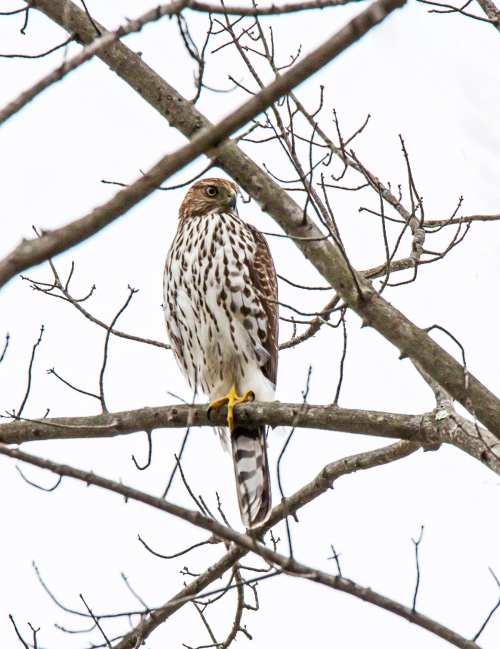As I looked up a trail on Thursday at Occoquan Bay National Wildlife Refuge, I noted the shape of a bird perched on a shaded gate. When I zoomed in, I realized it was a hawk, which flew to a distant tree as I was capturing the first shot. I shared the images with a Facebook birding group, and the general consensus is that the bird is a juvenile Cooper’s Hawk (Accipiter cooperii).
Most of the hawks that I regularly see are Red-shouldered Hawks and occasionally I spot Red-tailed Hawks. At first I thought that this one might be a Red-shouldered Hawk, but when I looked at my photos on my computer, I was really struck by the length of the hawk’s tail and by the elongated shape of the hawk’s body that are not characteristic of a Red-shouldered Hawk.
One of the folks on Facebook who responded to my posting noted, “Juvenile Cooper’s hawk. Beautiful youngster. You caught the neat teardrop shaped breast streaking, and the short wings against the long and widely banded tail.”
As many of you know, I am an opportunistic wildlife photographer—I enjoy walking around a lot and try to capture photos of my wonderful encounters with nature, like this one.
© Michael Q. Powell. All rights reserved.














